Stick a gob of clay into a child’s hands or onto a spinning wheel and watch a remarkable transformation take place: the child lapses into a Zen-like state of focus virtually unrecognizable to most parents.
But don’t let that calm exterior fool you. Inside, the child is undergoing a kind of cognitive-emotional metamorphosis, her dominant and weak hands forced to work in concert, his mind required to translate a mental image into a three-dimensional creation.
“Not many things in life make you concentrate the way a pottery wheel does,” says Andrew Cummins, owner of Cafe Pottery. “Each hand is working independently, but at the same time as a team, and in three dimensions. Pottery really teaches kids to focus in a way most other activities simply don’t.”
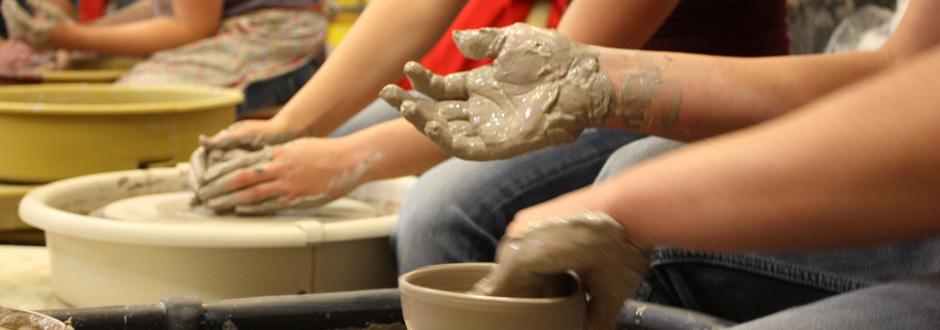
That intense focus no doubt is behind many of the benefits pottery offers kids, including the way it:
- Increases cognitive capabilities
- Calms hyperactive tendencies
- Soothes anxieties and jangled nerves
- Transforms depression into hope
- Expands creative capacities
Sound too good to be true? Read on. You may end up rediscovering the magic of pottery for yourself.
Reconnecting Kids with Earth
Once a common part of the public school system’s arts curricula, pottery took something of a double whammy over the past 20 years as budget-conscious schools began cutting arts funding and litigation-shy administrators started fretting over the safety hazard of kilns (pottery ovens).
Which is why, today, pottery is taught primarily through private clubs and organizations (some of which offer mobile services for schools and camps).
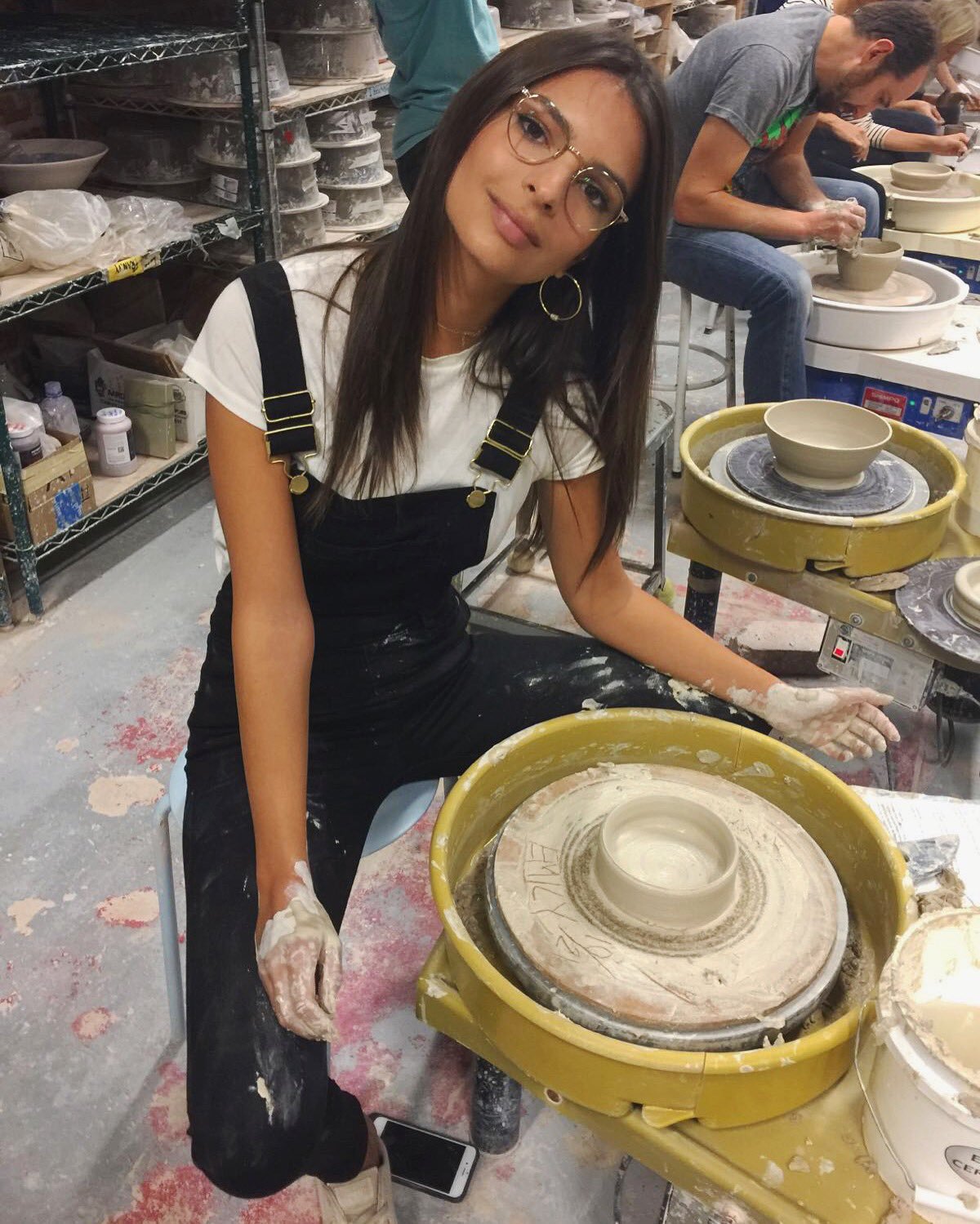
And boy are we glad for it, because as we’ve learned, not only is pottery one of the world’s oldest art forms, it’s also one of its most therapeutic, creative, and unique modes of artistic expression.
Where else is a child actively encouraged to play with – let’s be honest here, mud? And for a generation of kids increasingly disconnected from the natural world while increasingly addicted to digital screens, this hands-on approach is just what the doctor ordered. (E.E. Cummings no doubt had kids in mind when he described our world as “mud-luscious and puddle-wonderful.”)
“We can’t blame children for occupying themselves with Facebook rather than playing in the mud,” says scientist David Suzuki. “Our society doesn’t put a priority on connecting with nature. In fact, too often we tell them it’s dirty and dangerous.”
Pottery changes that. And not just with mud (ok, clay).
Pottery also introduces the child to other core aspects of Mother Nature – water for manipulating the clay, air for drying it, and fire for baking it into a keepsake.
“Water, says Josephine Kontkanen, manager of Jimmy Potters Studio, “becomes a really important component for kids, because they learn that they just need to add more to fix their piece or start over with something new.”
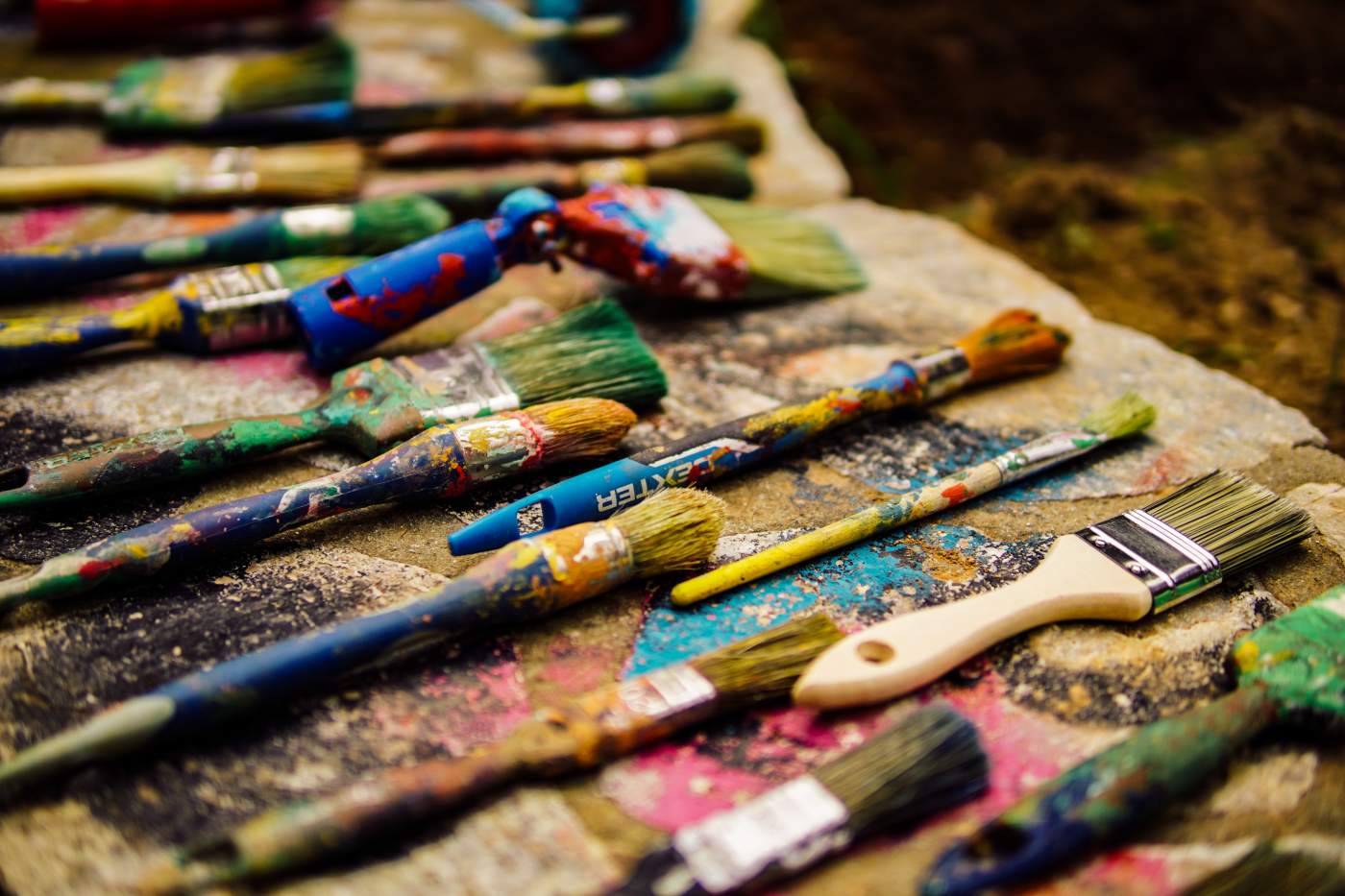
The icing on the cake? Breaking out the paints to add color and illustrations to their projects. “Kids really enjoy picking out the colors and creating their own artwork,” says Holly Hitchens, owner of Peace of Pottery.
Neurobic Therapy
In recent years pottery has started to move back into the mainstream, in large part because parents are discovering its many cognitive, therapeutic, and creative qualities and the simple fact that their kids love it. (The rich and famous also have played a role in pottery’s renaissance, some of whom have likened it to a new yoga.)
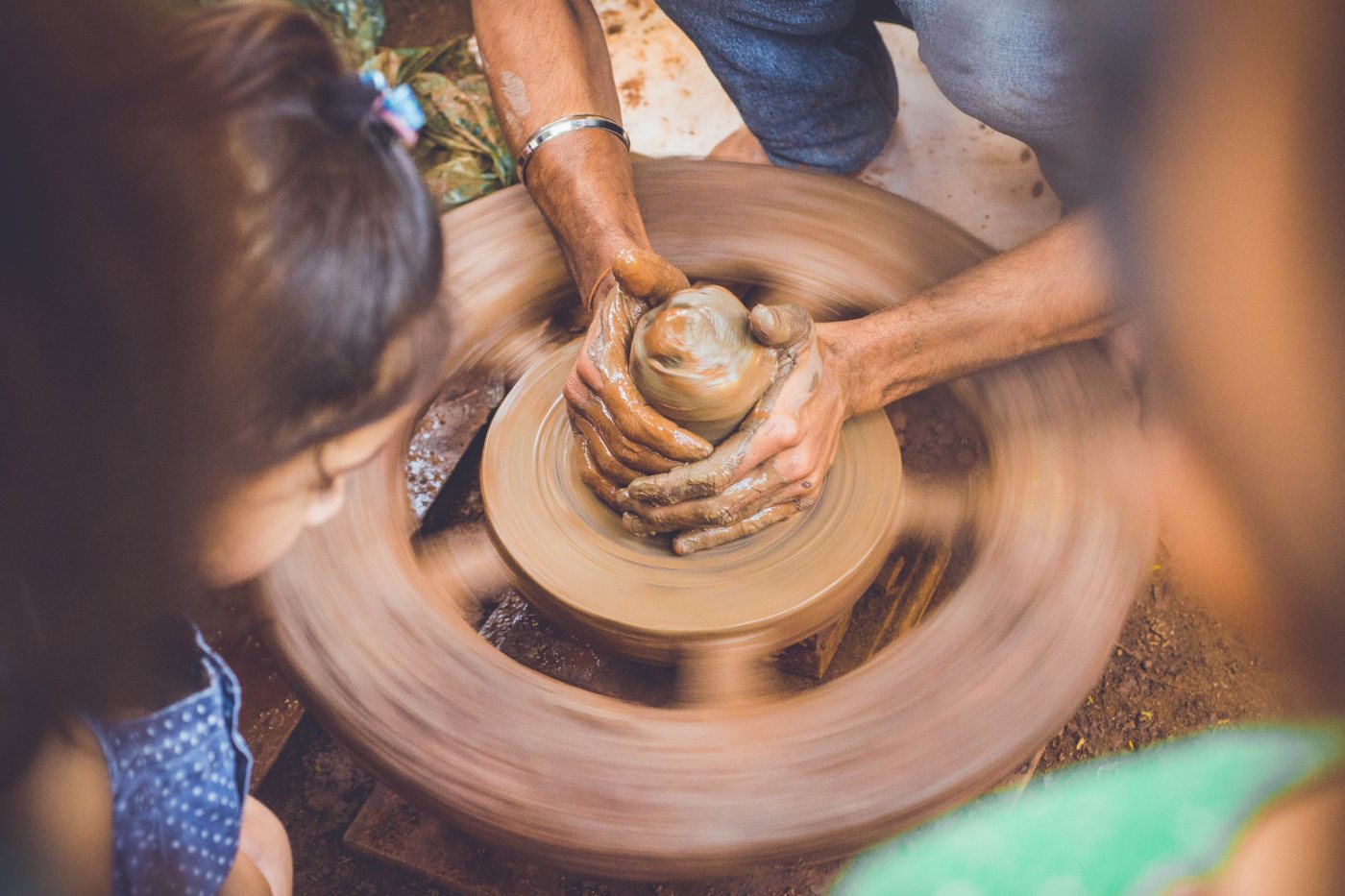
Walk into your typical kids’ pottery studio and one of the first things you’ll notice is the relative peace of the place even when populated with normally rambunctious young people. Other than the hum of pottery wheels, quiet pervades and all eyes (and hands) are, in a word, focused.
The intense focus demanded of art in general and pottery in particular, is also one of the reasons it has proved therapeutic – particularly for kids who suffer from anxiety, ADHD, depression, and other cognitive challenges. (Studies of pottery suggest it has powerful antidepressant qualities.)
“It’s very meditative,” says John Sheppard, a former graphic designer at The Wall Street Journal, in a Vogue interview. “It turns off a higher level of thinking. You have to let go and give in to the unpredictability of it. You can go in with an idea of what you want to make, and the clay doesn’t want to do that.”
Adding to this uniqueness is that aforementioned need to use two hands in three dimensions. Neuroscientists know that being required to use the non-dominant hand – especially in conjunction with the dominant one – leads to strong neural growth in a process now euphemistically known as ‘neurobics.’
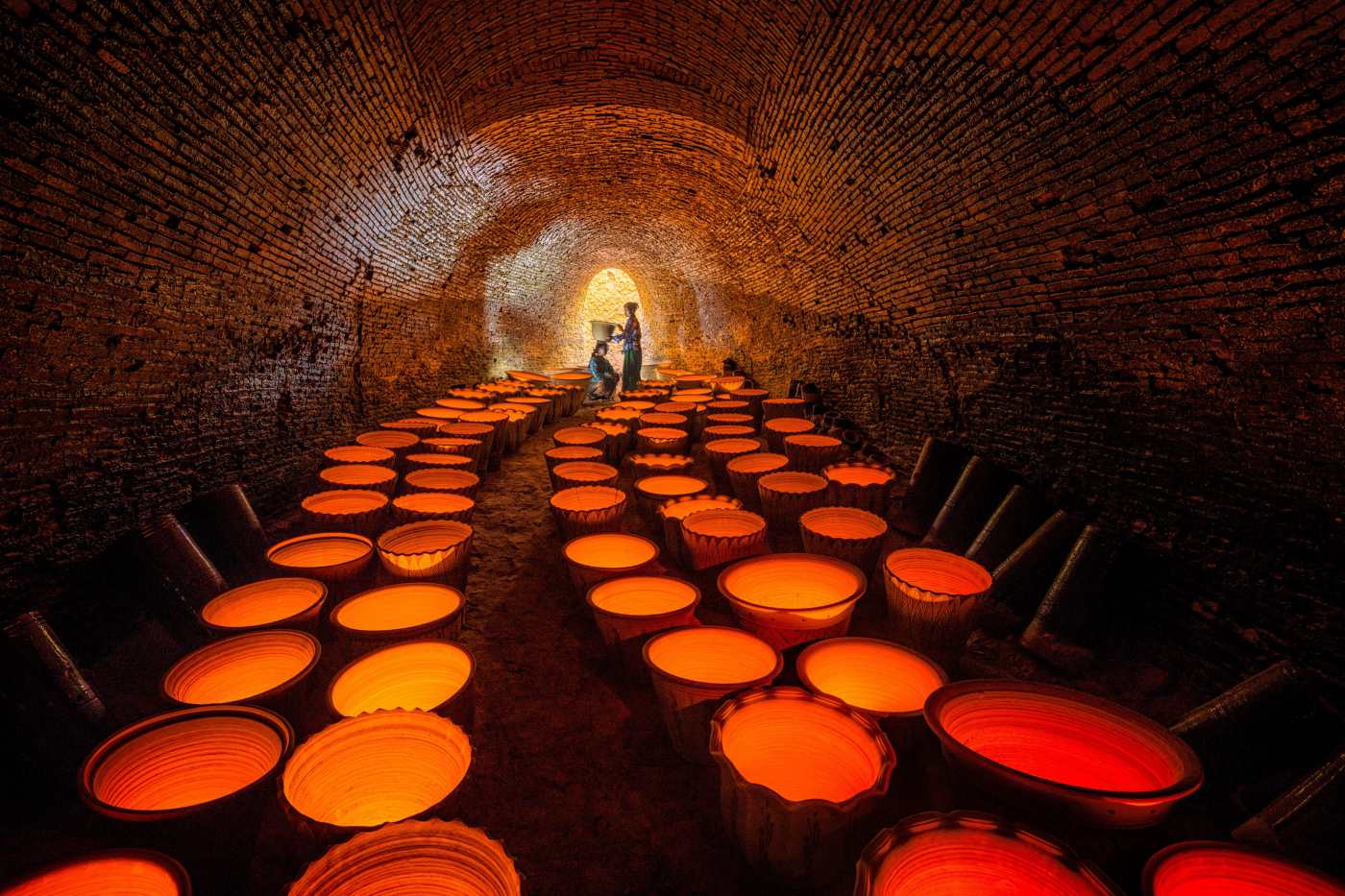
“It’s like having more cell towers in your brain to send messages along,” says Dr. P. Murali Doraiswamy, chief of biological psychiatry at Duke University Medical Center. “The more cell towers you have, the fewer missed calls.”
And working in three dimensions (rather than two with, say, painting or sketching) further expands the mind, since the child must now look at his or her project from multiple perspectives. Young potters “begin to understand shape, form, and perspective, and therefore get a first lesson in geometry,” writes Patty Storms, owner of Lakeside Pottery Studio. “The child learns to really look and see the world around them and discovers their place in that world.”
Yes folks, when it comes to your child’s cognitive, creative, and even emotional development, pottery might be considered art on steroids.

[…] strict instructions, potters can shape fluid, organic forms that channel their creative energy 2. The unlimited possibilities make wheel throwing deeply fulfilling as an artistic […]